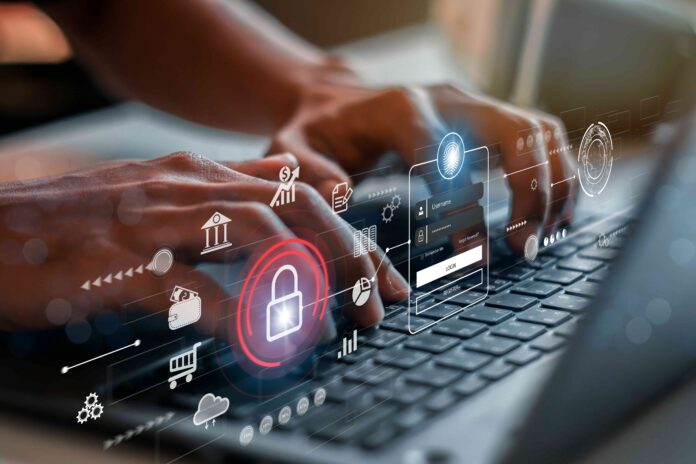Shielding Yourself from Cyber Threats: Expert Tips for Top-Notch Cybersecurity
Definition of Cybersecurity
Cybersecurity refers to the methods used to protect electronic devices, networks, and sensitive information from unauthorized access or attack. It encompasses a wide range of technologies, processes, and practices that are designed to secure digital environments against cyber threats and attacks.
The term cybersecurity includes all measures taken to protect not only personal computers but also servers, mobile devices, cloud storage systems and any other device connected to the internet. Cybersecurity is essential not only for individuals but also for businesses, governments and organizations that maintain sensitive information or assets.
Importance of Cybersecurity in today’s digital age
In today’s digital age, cybersecurity is more important than ever before. The proliferation of technology has made our lives easier in many ways but has also opened up new avenues for attackers who want to steal sensitive information or cause harm. With more people working remotely than ever before due to the COVID-19 pandemic, the number of cyber attacks has increased dramatically.
A successful cyber attack can result in loss of funds, identity theft or reputational damage. Furthermore, cyber attacks can cause significant disruption in operations for businesses and organizations leading to days or even weeks without access to vital resources.
Cybersecurity is an essential aspect of modern life that cannot be overlooked. The next sections will cover some common types of cyber threats as well as best practices you can use to stay safe online.
Types of Cyber Threats
Cyber threats are a growing concern in today’s digital age. With the increase in online activity, people are becoming more vulnerable to cyber-attacks.
Cybersecurity is about protecting your devices and sensitive information from unauthorized access, theft or damage. In this section, we’ll take a closer look at some of the most common types of cyber threats.
Malware attacks
Malware is short for malicious software. It refers to any program or code that has been designed to perform harmful actions on a computer system without the user’s consent.
Malware attacks can take many forms, including viruses, trojans, worms, adware and spyware. The most common way malware infects computers is through email attachments or downloads from untrusted websites.
To protect yourself from malware attacks, it’s crucial to have good antivirus software installed on your computer and keep it up-to-date. Additionally, avoid clicking on unknown email attachments or downloading software from untrusted websites.
Phishing scams
Phishing scams are another common type of cyber threat aimed at stealing users’ personal information such as credit card numbers and login credentials by posing as legitimate business entities through emails and fake websites. Phishing emails can look like official correspondence from well-known organizations like banks or social media platforms.
To stay safe from phishing scams, never click on links in suspicious emails or provide personal information on unknown websites that ask for personal information such as passwords or credit card numbers. Always double-check the sender details and website URLs before clicking anything.
Social engineering attacks
Social engineering attacks rely on psychological manipulation techniques to trick individuals into divulging confidential information unwittingly. Typically these attackers will use elaborate schemes such as posing as someone in authority, building trust, and then requesting sensitive information. Social engineering attacks can happen both electronically and in person.
Protecting yourself from social engineering attacks requires you to be vigilant with your personal information. Never reveal personal details to strangers or unverified sources and always verify requests that come through any communication channel by calling the organization’s official number and verifying their request.
Overall, it is essential to understand the types of cyber threats that exist so you can take the necessary measures to protect your online security from attackers seeking to steal your data or damage your device. By taking simple steps such as using antivirus software, avoiding suspicious links or attachments, and being cautious when providing personal information online, you can significantly reduce the risk of a cyber-attack.
Essential Tips for Cybersecurity
In today’s digital age, it’s essential to take measures to protect your online accounts and information from cyber threats. Cybersecurity involves using various tools and techniques to safeguard your devices, networks, and sensitive data from unauthorized access or theft. In this section, we will discuss some essential tips for cybersecurity that everyone should be aware of.
Passwords
Passwords are the first line of defense against cyber threats. Creating a strong password is crucial to keeping your accounts secure.
A strong password should be long, complex, and include a mix of letters, numbers, and special characters. It’s also recommended to use different passwords for each account you have.
Avoid using common words or phrases as part of your password; instead, consider making it a passphrase that only you would know. For example, “I love hiking in the mountains in summertime” can become “1L0v3H1kingMt5IntH3Summertime!” – a complex yet memorable passphrase that is difficult for hackers to guess.
Two-Factor Authentication
Two-Factor Authentication (2FA) adds an extra layer of security on top of your password by requiring a second form of verification before granting access to an account. The second factor could be something you have (like a physical token) or something you are (like a fingerprint).
Many online services offer 2FA as an option that users can enable in their account settings. By using 2FA, even if someone manages to obtain your password through hacking or social engineering attacks like phishing scams or malware attacks – they still won’t be able to gain access without the additional factor.
Encryption
Encryption is the process of transforming plain text into an unreadable format through the use of digital keys so that only those who possess the key can read it. It’s essential in cybersecurity because it can protect sensitive information such as credit card numbers, passwords, or personal identification.
Encrypting your data makes it difficult for hackers to read the information even if they manage to intercept it. Encryption is widely used in internet communication protocols like SSL / TLS (Secure Socket Layer / Transport Layer Security) which ensures that any data transmitted between your browser and the website server is encrypted.
Biometrics
Biometrics uses unique physical characteristics such as fingerprints, facial recognition, or retina scans as a security measure. In recent years, biometric authentication has become more common in mobile devices and laptops with built-in biometric sensors.
Biometric authentication adds an extra layer of protection because it’s almost impossible for someone to replicate a person’s unique physical traits — unlike a password that can be guessed or stolen. However, just like any other security measure – biometrics isn’t perfect and has its own limitations.
By implementing these essential tips for cybersecurity into your daily routine – you can significantly improve your chances of staying safe online. While no single security measure is perfect – a combination of strong passwords, 2FA, encryption and biometrics can go a long way toward protecting yourself against cyber threats.
Best Practices for Staying Safe Online
The internet has made our lives easier in countless ways. We can now communicate with people from around the world, shop for groceries without leaving our homes, and access a vast amount of information at our fingertips. However, this convenience comes with a downside – cyber threats are on the rise.
Hackers and cybercriminals are becoming increasingly sophisticated, making it more important than ever to take precautions when using the internet. Here are some best practices for staying safe online:
Keep Software Up-to-Date
One of the simplest yet most effective ways to protect your computer from cyber threats is to keep your software up-to-date. Software updates often include security patches that address known vulnerabilities that could be exploited by hackers or cybercriminals. Failing to install updates as soon as they become available can leave your computer vulnerable to attack.
Most software programs will prompt you to install updates automatically or notify you when an update is available. It’s important not to ignore these prompts and take immediate action when an update is available.
Avoid Clicking on Unknown Links or Downloading Suspicious Attachments
Phishing scams are one of the most common forms of cyber attacks and involve tricking people into revealing their sensitive information through fake emails or websites that appear legitimate. These messages often contain links or attachments that can download malware onto your computer, compromising your data.
To avoid falling victim to phishing scams, it’s important not to click on unknown links or download attachments unless you were expecting them from a trusted source. Always verify the sender’s email address and look for signs of phishing such as spelling errors in the message.
Use a Virtual Private Network (VPN) When Browsing the Internet
A VPN creates a secure connection between your device and the internet by encrypting all traffic between them. This ensures that your online activity is private and protected from prying eyes, making it harder for hackers to intercept your data or track your movements.
When choosing a VPN, look for one that offers strong encryption protocols and has a good reputation for protecting user privacy. It’s important to note that while VPNs offer an added layer of security, they are not foolproof and should be used in combination with other cybersecurity measures.
Regularly Backup Important Data
Despite our best efforts to protect our data, there’s always a risk of losing it due to hardware failure or cyber attacks. Regularly backing up your important data is essential in ensuring that you can recover it in case of an emergency. Cloud-based backup solutions like Google Drive or Dropbox offer affordable storage options and make it easy to access your files from anywhere with an internet connection.
It’s also a good idea to keep physical backups on an external hard drive or USB drive stored in a safe location. By following these best practices for staying safe online, you can significantly reduce the risk of falling victim to cyber threats and protect yourself against potential losses.
Conclusion
The Importance of Cybersecurity and Essential Tips to Stay Safe Online
In today’s increasingly digital world, it is more important than ever to protect ourselves from cyber threats. Cybersecurity is a vital aspect of our daily lives and can be achieved through a combination of strong passwords, two-factor authentication, encryption, biometrics, and best practices for staying safe online.
By utilizing these essential tips, we can minimize the risks posed by cybercriminals and better safeguard our personal information. Passwords are the first line of defense against cyber attacks.
Strong passwords that include a mix of upper and lowercase letters, numbers, symbols and are at least 8 characters long are essential to ensure account security. Furthermore, it is critical not to reuse passwords across multiple accounts or write them down on paper.
Two-Factor Authentication (2FA) provides an additional layer of security beyond just a password. It requires users to provide additional information aside from their username or password before gaining access to an account.
This method drastically reduces the risks associated with credential stealing. Encryption is another vital aspect of cybersecurity that offers an extra layer of protection for sensitive data transmission over the internet.
Encryption techniques render data unreadable unless decrypted by authorized parties with proper credentials. , following best practices such as regularly backing up important data , keeping software up-to-date , avoiding clicking on unknown links or downloading suspicious attachments , and using a Virtual Private Network (VPN) when browsing the internet can significantly reduce exposure risks.
It is essential for everyone to learn about cybersecurity threats and take proactive steps towards protecting their online presence. By taking these measures seriously we can contribute towards building a safer digital world for ourselves and future generations.



